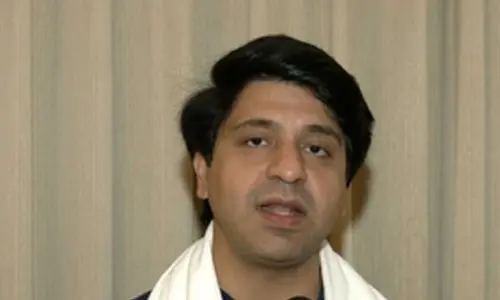Reaping demographic dividend

Finance Minister Arun Jaitley, while announcing a plan recently to launch the National Skills Mission through Skill Development and Entrepreneurship Ministry, referred to the demographic advantage the country is presently having over many others.
Finance Minister Arun Jaitley, while announcing a plan recently to launch the National Skills Mission through Skill Development and Entrepreneurship Ministry, referred to the demographic advantage the country is presently having over many others. Population specialists have been estimating changes in the age-structure expected in coming decades and have predicted years ago, the very advantageous demographic situation the country is bound to meet.
According to a Report of the Registrar-General issued in 2007, working age-group (15-59 years) will increase from 57.7% in 2001 to 64.3% by 2026. Child dependency is expected to lessen considerably from 35.3% in 2001 to 27.7% in 2016. Age structure of the population is such that the bulge seen in the working age-group stands in marked contrast to the ageing population of many western countries.
Youth bulge is sharpest now at 15-24 age-group, according to the latest data coming from the Registrar-General. Working-age population (15-64 years) constitutes 63.4% of the total as against 60% in 2001. Dependency ratio of children (0-14 years) and the old (65-100 years) to the working group has come down to 0.5%.
Jaitley issued a statement which betrays a mixture of positive and negative elements hidden in the age classification of India’s population. He stated: “India is one of the youngest nations in the world with more than 54% of the total population below 25 years of age. Yet today, less than 5% of our potential workforce gets formal skill training to be employable and stay employable”. The Deen Dayal Upadhyaya Grameen Yojana was launched to enhance the employability of rural youth which is identified as the key to unlocking India’s demographic dividend. In the current budget, a sum of Rs.1,500 crore is allocated to this programme. Changes in the population structure are a continuing phenomenon. Population control initially increases the ratio of youth population.
With decline in mortality rate, it will in its course increase the proportion of the aged. Western countries reaped the demographic dividend early in the 20th century and are now undergoing the problem of dwindling youth population. Many East Asian countries – South Korea, Singapore, and Taiwan, in particular - began to experience it in the late 20th century.
It led to rapid economic growth as it was accompanied with necessary facilities for development. China joined this group by 1980. India is presently having this population advantage which is likely to last till 2045. Demographic dividend is not repeated in any country. India has to move fast before this window of opportunity closes. The International Monetary Fund noted that substantial portion of economic growth in India since 1980s is due to demographic changes in the country.
Demographic dividend, which comes with demographic transition causing change in the age-structure of the population, does not yield concrete dividend unless it has the potential to increase economic growth and productivity.
The dividend does not accrue automatically as a matter of course, but has to be produced consciously by cultivating and utilizing the full potential of the entire working population.
As Jaitley has observed, the benefits of demographic dividend will flow only if our population is healthy, educated, and properly skilled. Demographic change is a principal cause behind urbanization, and internal and international migrations.
These have direct and significant impact on economic and social development of the nation. Availability of resources for development, choice of economic and employment patterns, and types of social sector activities depend on population structure.
The demographic advantage, if utilized carefully with educational, vocational developments, and with necessary ethical values, will take the country forward.
By: Dr S Saraswathi














